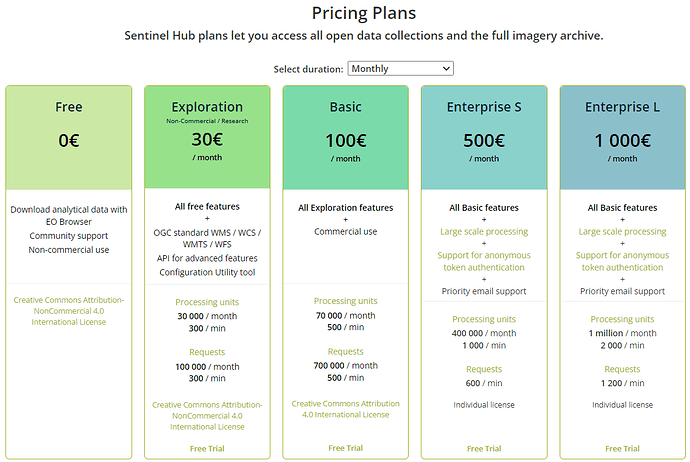Our firm is considering shifting to Sentinel Hub Process API from Copernicus SentinelSAT API, however for budget estimations we are not able figure out how many processing units would one request consume. Our main use case is fetching the NDVI, EVI & NDMI tiff as well as stats (mean, max, min and graph) for a farm shapefile. We currently have around 200 plots. This will also decide whether we make an API call every time we need to get this data or whether we save this on our own server for future use.
You can check the details of how processing units are calculated here.
That said, if you are fetching an NDVI for a plot of e.g. 1 hectare, you will consume very little PU - 0.01 probably. Therefore, in your case the number of requests will probably be a limiting factor, depending on how many dates you need.
I suggest to create a free trial account and simply try it out.
https://www.sentinel-hub.com/create_account/
You will be able to see in the Dashboard, how much it as consumed.
But is there any particular reason for the number of processing units being more than the number of requests in enterprise pricing plans.
Also based on this definition in the documentation for eg. If i put API call for NDVI for a 1 hectare plot for a single iteration and PU consumed is 0.01, then did I use 1 request or 0.01 request ?
Enterprise plans actually come with unlimited number of requests.
Generally speaking, depending on what kind of requests the users do, an individual request might consume more than 1 processing unit - i.e. iif you ask for an RGB image 2500x2500px large, it will consume 23.8 processing units.
Requests are always integers. So if you do 1 request, this will consume 1 request, regardless of how many processing units are consumed.
so for enterprise plan number of requests are unlimited?
How many processing units are consumed for statistical API ? We also would want to include stats and graphs as well.
Yes, on the pricing plans you see the monthly limits for requests and processing units.
Statistical API consumes PUs following the same principle. As you would probably often run the Statistical API analysis over longer time period, you would need to multiply the PU for each observation with number of observations. I.e. there might be 50 observations per year, so 50x0.01 PU = 5 PU.
This topic was automatically closed 60 days after the last reply. New replies are no longer allowed.
